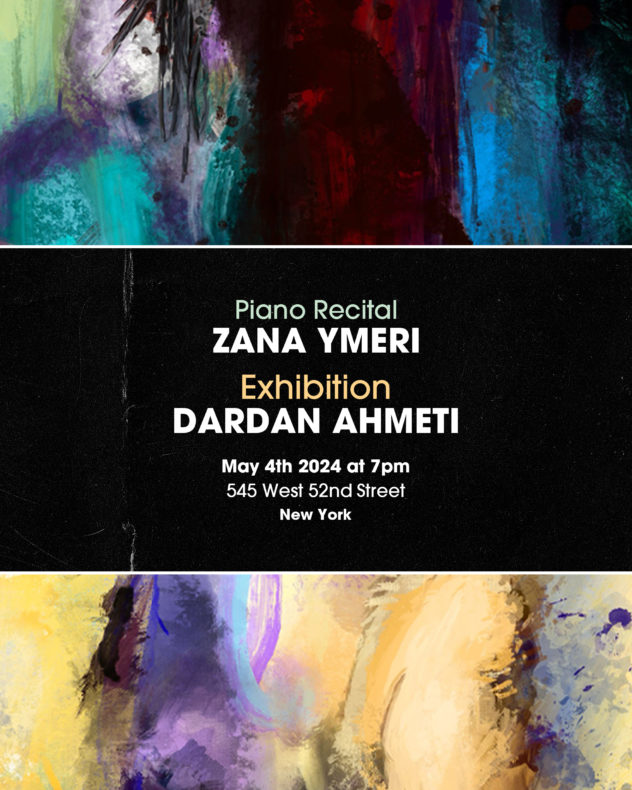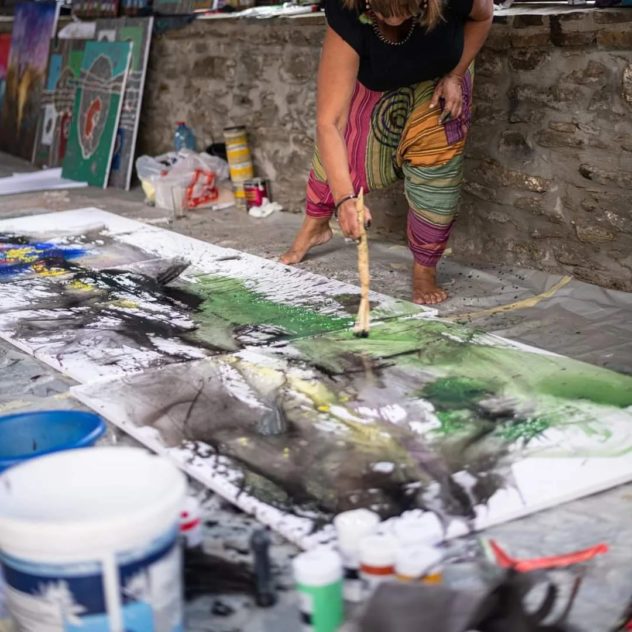Mladen Miljanović: Holiday of Discomfort
May 20–June 1, 2024
Curated by Sara Reisman
Opening: May 20, 7pm:
Holiday of Discomfort is a solo exhibition by Mladen Miljanović, whose conceptual artistic practice calls into question his own environment and living conditions. Influenced by the experience of growing up during the Bosnian war (1992-1995), the exhibition attempts to address the consequences of a destroyed, impoverished, ethnically and territorially divided, and externally isolated country. Holiday of Discomfort centers on Miljanović’s socially engaged and subversive cinematic project called The Final Battle, and is presented alongside a companion performance piece titled The Column.
The Final Battle is a two-channel video installation that documenting collaboration between Miljanović, who initiated five staged performances through a series of casting calls, and Greg Blakey (director of photography and producer), who captured the casting process through masterful film and video production. The film component of the project, aptly titled The Final Battle, unfolds both in reality and in the exhibition through in two channels: a trailer, displayed for viewing on the street, and, projected in the gallery is the longer film of the staged casting calls, reminiscent of clichéd Hollywood tropes. Through a mashup of historical references, the trailer alludes to historical clashes like the Battle of Cannae (216 BC) and the Battle of Waterloo (1815) to more recent conflicts such as the Battle of Stalingrad (1942). The trailer enumerates these battles alongside smaller places in Bosnia and Herzegovina: Bihać, Trebinje, Bijeljina, and Doboj, where the casting for this imagined film took place.
As a full length film, The Final Battle documents five staged readings featuring participants who are both directly and indirectly affected by war: veterans, civilian victims, disabled individuals, those traumatized by the conflict that wracked Bosnia-Herzegovina in the early 1990s, and others whose lives have been shaped in part by inherited generational trauma. Additionally, the ‘cast’ of this socially engaged film project includes those who performed in casting calls that Miljanović orchestrated for an imaginary film. As part of their engagement, the ‘actors’ – many of whom are not trained but have had proximity to the political events detailed in the film – agreed to be part of an experimental film project that doubly operates as a subversive cinematic social experiment. The film and the exhibition coincide with wars in Ukraine and the Middle East, both of which have come to normalise accelerated militarization and expanded conflict as a fact of everyday life. Miljanović’s artistic project attempts to contend with this deadly spiral of violence, which has a widespread psychological effect that prevents purposeful articulation and functions to undermine processes of reconciliation and social repair.
On May 20, the evening of the opening reception, Miljanović will perform The Column, which aims to bring viewers into a space of unrest and discomfort. The dialectics of The Column in dialogue with The Final Battle, two formally and representationally different but related artworks, explore the tensions inherent to the moment when social conventions and limitations are transferred onto the individual, and imposed on the body.
With this poignant cinematic depiction of the personal and far reaching impacts of war, Miljanović raises questions about the allure of violence and war that is so frequently simulated in the media surrounding western culture. The encounter with real-life victims of violence forces a reckoning with their motivations and exposes viewers to the raw realities of trauma. The project emerges as an inexorable impasse, not for those who perish within it, but for those burdened by the enduring scars of trauma and violence.
Far from being merely an experimental endeavor, The Final Battle transcends into a social experiment that intersects with the fabric of reality on the fringes of Europe, where militarization steadily encroaches. Employing a method of inverse approach, the film commences its exploration of conflict by reflecting on its aftermath: the day of the Dayton Agreement and the somber night in Bosnia when peace was ostensibly brokered, yet the skies remained illuminated with celebratory gunfire, a poignant reminder of the enduring impact, and ongoing presence of war.
A prominent artist in Southeast Europe, Mladen Miljanović has exhibited abroad drawing attention to his artworks that deal with the consequences of the conflict and war. His earliest projects build on the knowledge he acquired in military school. Formally trained as a painter, he now combines new media, film, performance, and conceptual strategies into a pluralistic, socially engaged, and often subversive approach to contemporary art. Miljanović’s current approach to artmaking increasingly privileges process over product, giving up certain aspects of control to participants.
Miljanović has exhibited at the 55th Venice Biennale, the 15th Video Biennale in Busan, and most recently at the 13th Biennale in Cairo, among other group exhibitions. His independent projects have been presented around the world: acb Gallery, Budapest (2022); MoCA, Belgrade (2021); Peacock Visual Arts, Aberdeen (2019); MUMOK, Vienna (2010); A+A Gallery, Venice (2012); Antje Wachs Gallery Berlin (2011); Neue Galerie, Graz (2007), among many others.


